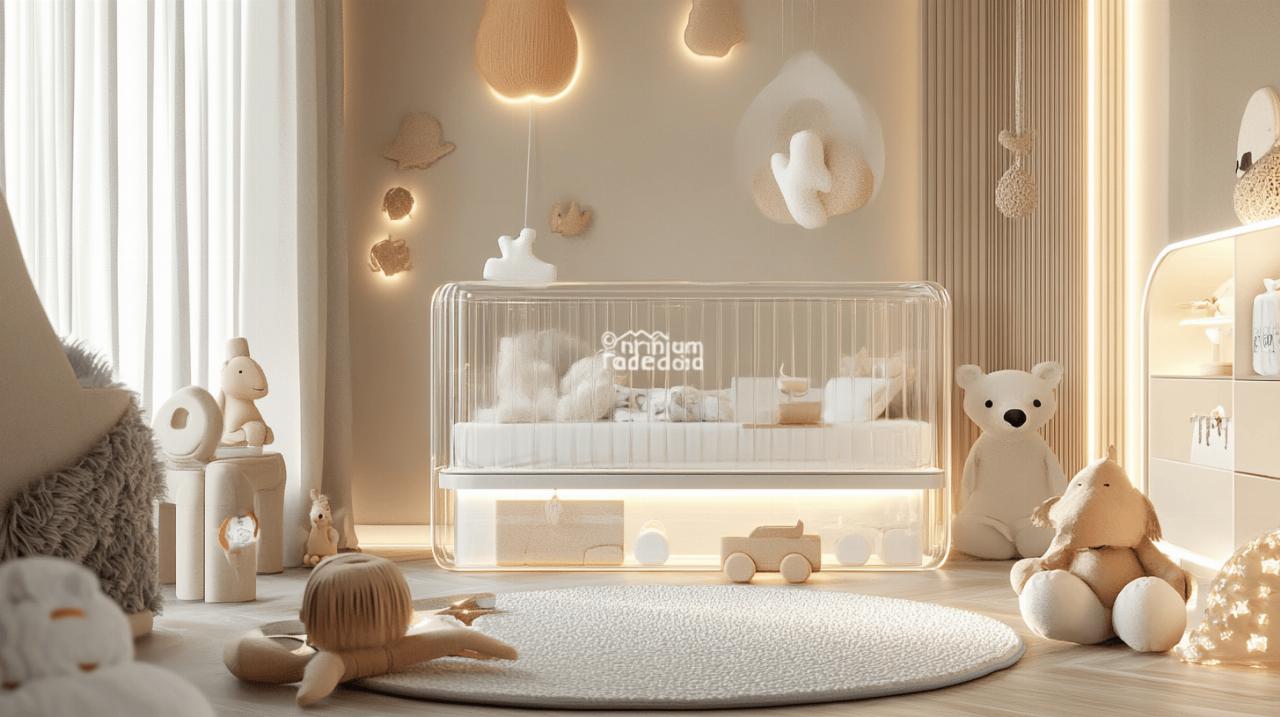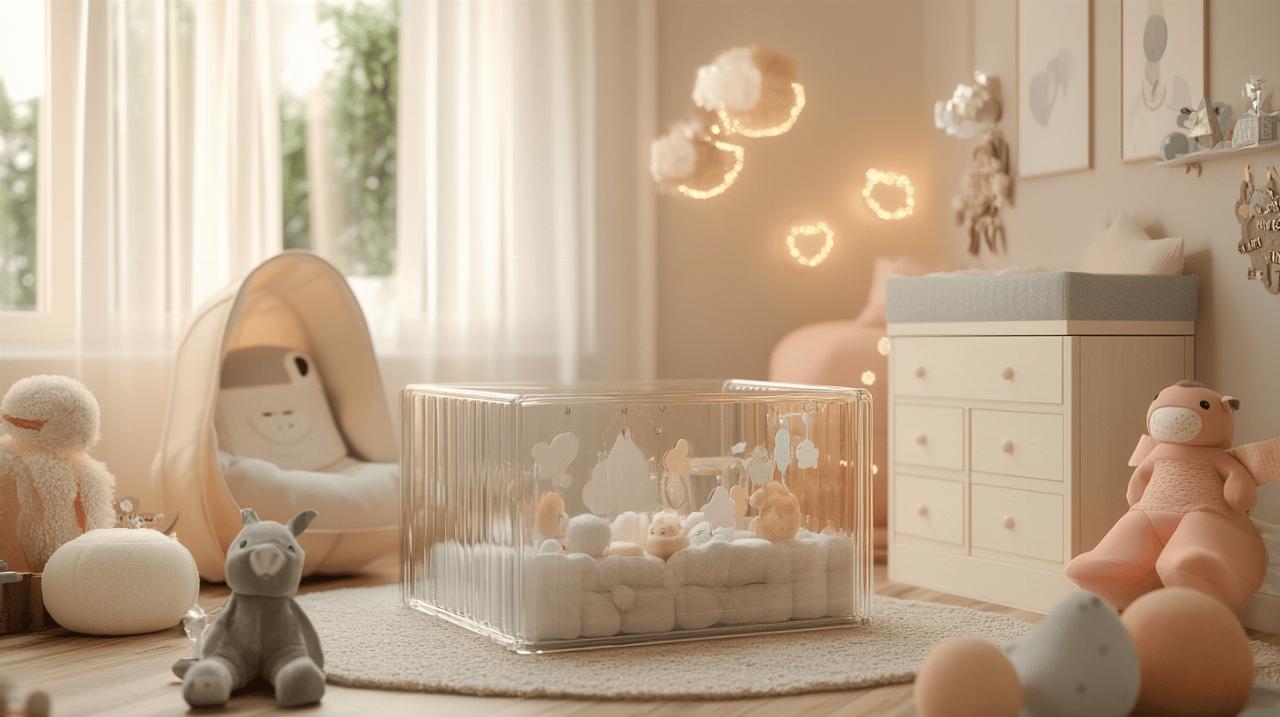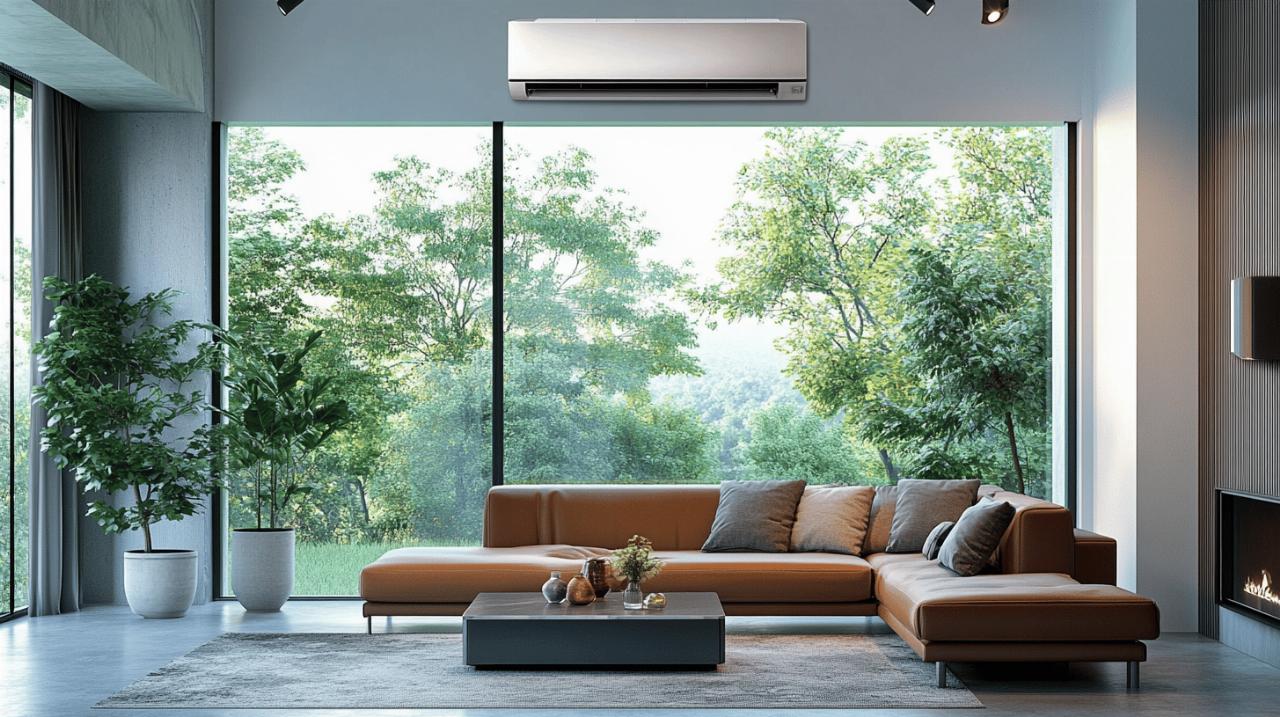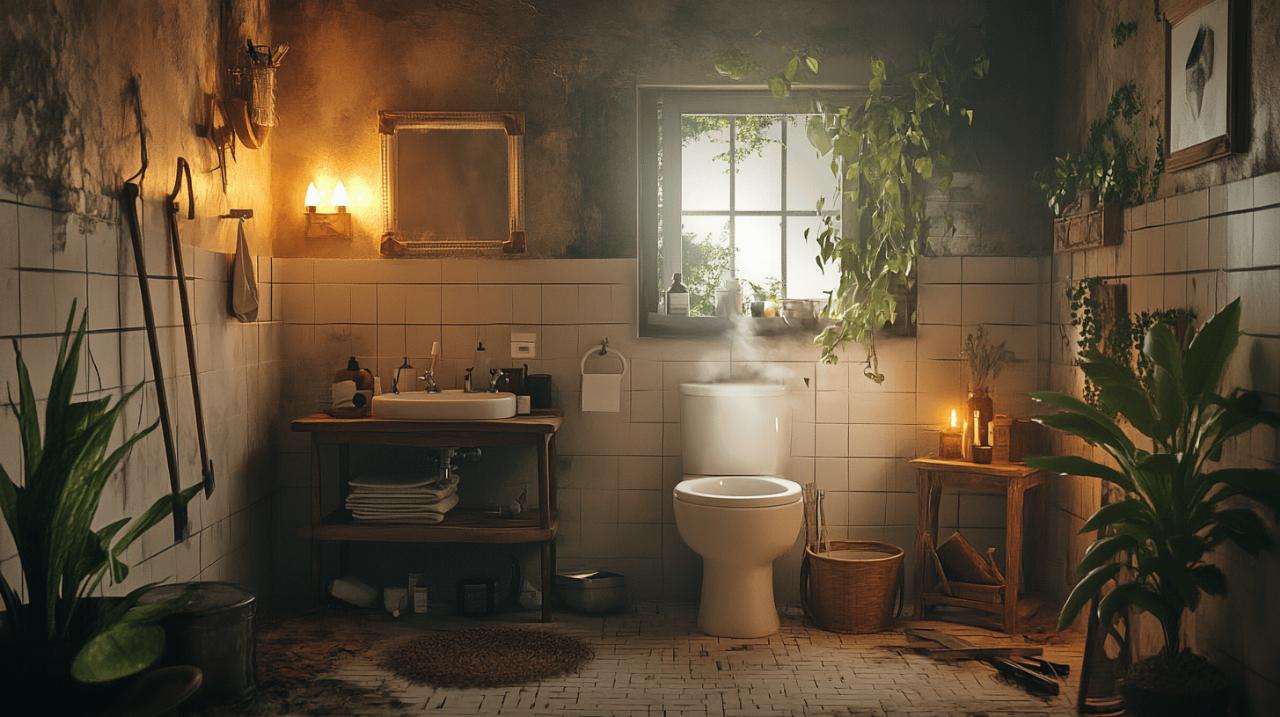Why Plexiglass Baby Beds Are the Modern and Secure Solution Every Parent Needs
Modern nursery design has evolved significantly in recent years, with parents increasingly seeking furniture that balances visual appeal with practical safety considerations. Among the most compelling innovations in baby furniture are plexiglass baby beds, which offer a distinctive combination of contemporary styling and reassuring security features. These transparent sleeping solutions represent a thoughtful approach to nursery furnishing, addressing both the aesthetic sensibilities of design-conscious parents and the paramount need for a safe, hygienic environment where little ones can rest peacefully.
The contemporary appeal of plexiglass nursery furniture
Minimalist aesthetics that transform your nursery space
Plexiglass baby beds have captured the attention of parents who appreciate clean lines and understated elegance in their home environments. The transparent quality of these sleeping solutions creates a sense of openness that traditional wooden cots simply cannot replicate. This visual lightness proves particularly valuable in smaller nurseries, where bulky furniture can make the space feel cramped and confined. Acrylic cribs are popular precisely because they take up less visual space, allowing the room to feel more expansive and airy whilst still providing a secure place for your baby to sleep. The see-through panels permit light to flow freely throughout the room, enhancing the overall brightness and creating a welcoming atmosphere that benefits both parent and child.
The versatility of plexiglass nursery furniture extends beyond its space-enhancing properties. These contemporary pieces complement a wide array of interior design schemes, from minimalist Scandinavian aesthetics to more eclectic modern arrangements. Whether your nursery features neutral tones or bold accent colours, a transparent cot serves as a chameleon-like element that adapts seamlessly to its surroundings. Some models incorporate subtle design flourishes, such as metallic accents or coloured frames, that add visual interest without overwhelming the space. The ability to see through the cot also means that decorative elements on the walls and floor remain visible, creating a cohesive design narrative throughout the room rather than interrupting it with a solid, opaque structure.
Transparency and Visual Connection with Your Little One
The clear panels of plexiglass baby beds offer an invaluable practical advantage that resonates deeply with parents: the ability to maintain visual contact with your sleeping child from virtually any angle in the room. This unobstructed view provides reassurance during those early months when parents naturally feel anxious about their newborn's wellbeing. Unlike traditional cots with solid sides that require you to approach closely to check on your baby, transparent beds allow you to glance over from your chair or even from the doorway and immediately see your little one's position and breathing. This feature proves especially beneficial during the night when you might be monitoring your child without wanting to disturb their rest by walking right up to the bedside.
The transparency of these modern sleeping solutions also facilitates the placement of monitoring equipment. Baby monitors can be positioned more flexibly when you have a clear view through the cot sides, ensuring optimal angles for both video surveillance and general observation. Furthermore, this openness creates a sense of connection for babies themselves as they grow and become more aware of their surroundings. Rather than waking up enclosed by solid barriers, they can see out into their familiar nursery environment, potentially reducing feelings of confinement or distress. The psychological benefits of this visual accessibility work in both directions, strengthening the bond between parent and child whilst fostering a sense of security and comfort that contributes to better sleep patterns for the entire family.
Uncompromising safety features of plexiglass cots
Shatter-resistant materials and non-toxic construction
The safety credentials of plexiglass baby beds stand as one of their most compelling attributes. High-quality acrylic materials used in these cots are engineered to be shatter-resistant, addressing the primary concern parents might have about glass-like surfaces in a nursery environment. Unlike conventional glass, which can fracture into dangerous shards, plexiglass maintains its structural integrity even under significant impact. This durability ensures that even if your growing toddler begins testing the boundaries of their sleeping space with enthusiastic kicks or throws, the transparent panels remain intact and secure. Manufacturers of reputable plexiglass cots subject their materials to rigorous testing to ensure they meet or exceed established safety standards, including certifications such as Greenguard Gold, which verifies low chemical emissions.
Equally important is the non-toxic nature of properly manufactured plexiglass nursery furniture. Parents rightly worry about harmful chemicals leaching from furniture finishes or materials, particularly in items where babies spend extended periods. Quality plexiglass beds are crafted from materials free from phthalates, lead, and other concerning substances, creating a genuinely safe sleep environment. The construction typically adheres to stringent standards such as BS EN 716 certification, which governs cot safety throughout the United Kingdom. These regulations address crucial elements including slat spacing, which must measure between forty-five and sixty-five millimetres to prevent a baby's head from becoming trapped, and the prohibition of drop-side mechanisms that were banned in two thousand and twelve due to safety concerns. When selecting a plexiglass cot, verifying these certifications provides peace of mind that your investment truly prioritises your child's wellbeing.
Hygienic surfaces that protect against germs and allergens
The smooth, non-porous surface of plexiglass offers distinct hygienic advantages over traditional materials used in baby furniture. Wood, whilst beautiful and warm, features a naturally porous structure that can harbour bacteria, dust mites, and other allergens within its tiny crevices, even with regular cleaning. Fabric elements present similar challenges, as they can accumulate dust and require more intensive laundering to maintain proper hygiene standards. Plexiglass, by contrast, provides a seamless barrier that prevents microbial colonisation and makes thorough sanitisation remarkably straightforward. A simple wipe with appropriate cleaning solutions removes virtually all traces of germs, spills, or dust, ensuring that your baby's immediate sleeping environment remains pristine.
This ease of maintenance proves particularly valuable during illness or when general cleanliness becomes paramount. Parents can quickly sanitise the entire cot between uses, reducing the risk of cross-contamination or the persistence of cold and flu viruses that might linger on more absorbent surfaces. The transparent nature of the material also means that any soiling or mess becomes immediately visible, prompting swift cleaning rather than going unnoticed as might happen with opaque surfaces. For families with allergies or sensitivities, this hygienic advantage cannot be overstated. The ability to maintain a truly clean sleeping space contributes directly to respiratory health and overall comfort, potentially reducing the frequency of allergic reactions or respiratory complaints that can disrupt sleep and general wellbeing for both baby and parents.
Essential considerations when selecting a plexiglass baby bed
Dimensions, construction quality and safety standards
 When evaluating plexiglass baby beds, the dimensions of the sleeping surface warrant careful attention to ensure both safety and longevity. Standard cots typically measure one hundred and twenty centimetres by sixty centimetres, providing ample space for a baby to move and grow comfortably through their first years. Some parents with limited space might consider mini cots measuring under one hundred centimetres, though these may require replacement sooner as the child grows. The mattress fit represents another critical dimension consideration, as gaps exceeding twenty millimetres between the mattress edge and cot sides create dangerous spaces where a baby's limbs or head could become trapped. Ensuring a snug, proper fit eliminates this risk and contributes to a secure sleep environment.
When evaluating plexiglass baby beds, the dimensions of the sleeping surface warrant careful attention to ensure both safety and longevity. Standard cots typically measure one hundred and twenty centimetres by sixty centimetres, providing ample space for a baby to move and grow comfortably through their first years. Some parents with limited space might consider mini cots measuring under one hundred centimetres, though these may require replacement sooner as the child grows. The mattress fit represents another critical dimension consideration, as gaps exceeding twenty millimetres between the mattress edge and cot sides create dangerous spaces where a baby's limbs or head could become trapped. Ensuring a snug, proper fit eliminates this risk and contributes to a secure sleep environment.
Construction quality directly influences both safety and durability, making it essential to examine how the plexiglass panels are secured to the frame structure. Look for robust fastenings that prevent wobbling or shifting, as instability in a cot poses obvious dangers. The frame itself, often crafted from solid wood with FSC certification indicating sustainable forestry practices, should demonstrate substantial weight and solidity rather than feeling lightweight or flimsy. Many quality models arrive with pre-drilled holes and can be assembled in under forty minutes, but the ease of assembly should never come at the expense of structural integrity. The corners and edges of both the plexiglass and frame elements should be smoothly finished and rounded, eliminating sharp points that could cause injury. Non-toxic finishes on any wooden elements complement the safety of the plexiglass components, creating a comprehensively safe sleeping solution.
Ventilation requirements for your baby's comfort
Adequate airflow within and around the cot environment plays a crucial role in maintaining comfortable sleeping conditions for your baby. Whilst the transparency of plexiglass offers visual benefits, solid panels can potentially restrict air circulation compared to traditional slatted designs. This consideration becomes particularly important in warmer months or in rooms that tend to retain heat. When selecting a plexiglass baby bed, examine the design for ventilation features such as small perforations in the panels or sections where the plexiglass alternates with open spaces. Some models incorporate hybrid designs with one or two clear panels alongside traditional slatted sides, providing both the visual benefits of transparency and the airflow advantages of conventional construction.
Temperature regulation matters enormously for infant safety and comfort, as babies cannot effectively regulate their own body temperature in the same way adults can. Overheating has been identified as a risk factor in sudden infant death syndrome, making proper ventilation not merely a comfort issue but a significant safety concern. Beyond the cot design itself, consider the broader sleep environment when using plexiglass furniture. Pairing a transparent cot with a firm, breathable mattress ensures that air can circulate beneath your baby as well as around them. Avoid placing the cot directly against radiators or in direct sunlight, as the transparent panels may concentrate heat rather than dissipate it. By thoughtfully considering ventilation alongside all other factors, you create an optimal sleeping environment that keeps your little one comfortable and safe throughout the night.
Why plexiglass cots are worth the investment
Durability and Longevity for Growing Families
The robust nature of quality plexiglass baby beds translates directly into long-term value that justifies their initial cost. Unlike furniture constructed from pressed wood or lower-grade materials that may deteriorate with regular use and cleaning, properly manufactured acrylic panels maintain their clarity and structural integrity throughout years of service. The shatter-resistant properties that make these cots safe also contribute to their longevity, as the panels withstand the inevitable bumps and knocks that occur in an active nursery environment. The frame components, typically crafted from solid wood rather than composite materials, similarly offer durability that allows the furniture to serve multiple children within a family or even be passed along to friends and relatives once your own children have outgrown it.
Some plexiglass cot designs incorporate convertible features that extend their useful life beyond the infant and toddler years. These adaptable pieces can transform from a cot into a toddler bed or even a small sofa, evolving alongside your child's changing needs. This versatility maximises your return on investment whilst reducing waste and the need to purchase replacement furniture as your child grows. Most children transition out of a standard cot between eighteen and thirty-six months, or when they reach approximately eighty-nine centimetres in height, but convertible designs remain relevant well beyond this timeframe. The combination of physical durability and functional adaptability makes plexiglass baby beds a financially sensible choice for families planning for the long term, particularly those hoping to welcome multiple children.
Versatile design that complements any interior style
The aesthetic neutrality of transparent furniture represents an often-overlooked advantage that becomes increasingly valuable as your design preferences evolve over time. Whilst a particular colour or style of traditional wooden cot might perfectly complement your current nursery scheme, tastes change and homes get redecorated. A plexiglass baby bed transcends these shifting preferences, remaining visually appropriate regardless of whether you repaint walls, change textiles, or completely reimagine the room's aesthetic direction. This timeless quality ensures that the furniture never looks dated or out of place, maintaining its visual appeal throughout its functional lifespan and even into potential future use with subsequent children.
The compatibility of plexiglass cots with various design philosophies extends beyond mere colour coordination. These transparent pieces complement both maximalist spaces filled with colourful toys and decorations as well as minimalist environments where simplicity reigns supreme. They work equally well in traditional nurseries with classic furnishings as in contemporary spaces featuring modern design elements. Some models incorporate subtle design details such as metallic legs in finishes like rose gold, which pairs beautifully with other metal accents commonly found in modern interiors. Whether positioned against a feature wall or placed centrally in the room, a plexiglass cot enhances rather than dominates the space, allowing other design elements to shine whilst quietly fulfilling its primary function. This versatility makes these contemporary sleeping solutions an investment in both your child's safety and your home's enduring aesthetic appeal.



